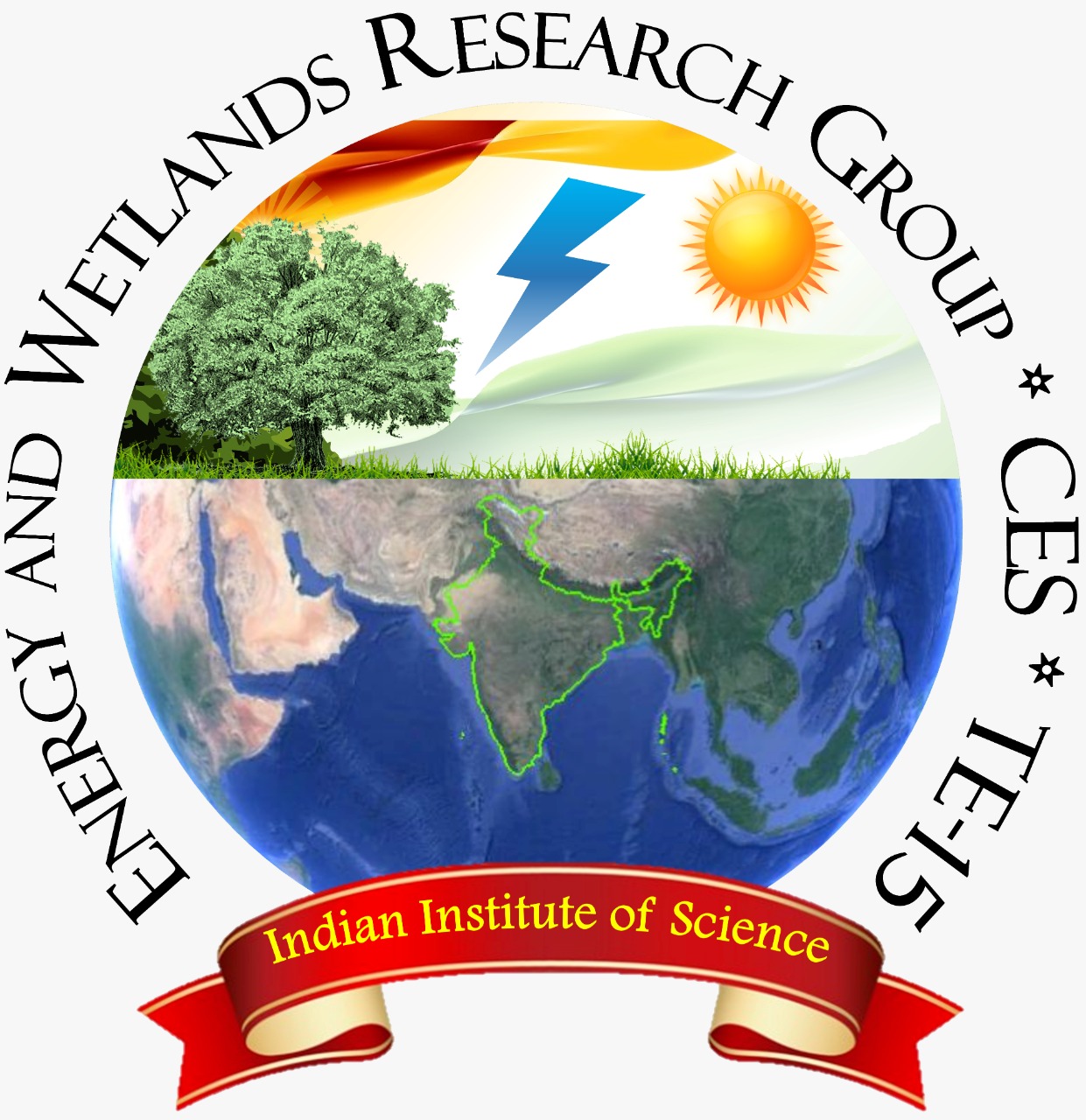|
References
Aronson J, Alexander S (2013) Ecosystem Restoration is Now a Global Priority: Time to Roll up our Sleeves. Restor Ecol 21:293–296. https://doi.org/10.1111/rec.12011 Asgarian A, Amiri BJ, Sakieh Y (2015) Assessing the effect of green cover spatial patterns on urban land surface temperature using landscape metrics approach. Urban Ecosyst 18:209–222 Bharath S, Nimish G, Ramachandra T V (2017) Visualization and prediction of landscape dynamics in the protected areas of Karnataka. IJRET Int J Res Eng Technol 06:2321–7308. https://doi.org/10.15623/ijret.2017.0614011 Bharath S, Rajan KS, Ramachandra TV (2013) Land Surface Temperature Responses to Land Use Land Cover Dynamics. Geoinfor Geostat An Overv 1:. https://doi.org/10.4172/2327-4581.1000112 Bonan GB (2008) Forests and Climate Change: Forcings, Feedbacks, and the Climate Benefits of Forests. Science (80- ) 320:1444–1449. https://doi.org/10.1126/science.1155121 Brunckhorst D (2011) Ecological restoration across landscapes of politics, policy, and property. In: Human dimensions of ecological restoration. Springer, pp 149–161 Chakraborty SD, Kant Y, Mitra D (2015) Assessment of land surface temperature and heat fluxes over Delhi using remote sensing data. J Environ Manage 148:143–152 Costanza R, D’Arge R, de Groot R, et al (1997) The value of the world’s ecosystem services and natural capital. Nature 387:253–260. https://doi.org/10.1038/387253a0 Danodia A, Patel NR, Chol CW, et al (2019) Application of S-SEBI model for crop evapotranspiration using Landsat-8 data over parts of North India. Geocarto Int 34:114–131 Deka J, Tripathi OP, Khan ML (2014) Study on land use/land cover change dynamics through remote sensing and GIS--A case study of Kamrup District, North East India. J Remote Sens GIS 5:55–62 DeWitt TH, Berry WJ, Canfield TJ, et al (2020) The final ecosystem goods and services (FEGS) approach: A beneficiarycentric method to support ecosystem-based management. Ecosyst Manag Ecosyst Serv Aquat Biodivers Theory, tools Appl 127–148 Estoque RC, Murayama Y, Myint SW (2017) Effects of landscape composition and pattern on land surface temperature: An urban heat island study in the megacities of Southeast Asia. Sci Total Environ 577:349–359 Filotas E, Parrott L, Burton PJ, et al (2014) Viewing forests through the lens of complex systems science. Ecosphere 5:1–23 Fischer AP (2018) Forest landscapes as social-ecological systems and implications for management. Landsc Urban Plan 177:138–147 Fulford RS, Heymans SJJ, Wu W (2020) Mathematical Modeling for Ecosystem-Based Management (EBM) and Ecosystem Goods and Services (EGS) Assessment. In: Ecosystem-Based Management, Ecosystem Services and Aquatic Biodiversity. Springer, Cham, pp 275–289 Gadgil M, Daniels RJR, Ganeshaiah KN, et al (2011) Mapping ecologically sensitive, significant and salient areas of Western Ghats: proposed protocols and methodology. Curr Sci 175–182 Ganasri BP, Dwarakish GS (2015) Study of land use/land cover dynamics through classification algorithms for Harangi catchment area, Karnataka State, INDIA. Aquat Procedia 4:1413–1420 Hansen MC, DeFries RS, Townshend JRG, Sohlberg R (2000) Global land cover classification at 1 km spatial resolution using a classification tree approach. Int J Remote Sens 21:1331–1364 Hansen MC, Stehman S V, Potapov P V (2010) Quantification of global gross forest cover loss. Proc Natl Acad Sci 107:8650–8655 Huang C, Song K, Kim S, et al (2008) Use of a dark object concept and support vector machines to automate forest cover change analysis. Remote Sens Environ 112:970–985 Ibrahim I, Samah AA, Fauzi R, Noor NM (2016) The land surface temperature impact to land cover types. Int Arch Photogramm Remote Sens Spat Inf Sci 41:871 Jackson RB, Baker JS (2010) Opportunities and Constraints for Forest Climate Mitigation. Bioscience 60:698–707. https://doi.org/10.1525/bio.2010.60.9.7 Jeganathan C, Roy PS, Jha MN, others (2010) Markov model for predicting the land cover changes in Shimla district. Indian For 136:667–681 Kayet N, Pathak K, Chakrabarty A, Sahoo S (2016) Spatial impact of land use/land cover change on surface temperature distribution in Saranda Forest, Jharkhand. Model Earth Syst Environ 2:1–10 Kuemmerle T, Chaskovskyy O, Knorn J, et al (2009) Forest cover change and illegal logging in the Ukrainian Carpathians in the transition period from 1988 to 2007. Remote Sens Environ 113:1194–1207 Kumari B, Tayyab M, Mallick J, et al (2018) Satellite-driven land surface temperature (LST) using Landsat 5, 7 (TM/ETM+ SLC) and Landsat 8 (OLI/TIRS) data and its association with built-up and green cover over urban Delhi, India. Remote Sens Earth Syst Sci 1:63–78 Landers DH, Nahlik AM (2013) Final ecosystem goods and services classification system (FEGS-CS). Anon EPA United States Environ Prot Agency Rep Number EPA/600/R-13/ORD-004914 Lawrence D, Vandecar K (2015) Effects of tropical deforestation on climate and agriculture. Nat Clim Chang 5:27–36. https://doi.org/10.1038/NCLIMATE2430 Le-Xiang Q, Hai-Shan CUI, Chang J (2006) Impacts of land use and cover change on land surface temperature in the Zhujiang Delta. Pedosphere 16:681–689 Leilei L, Jianrong F, Yang C (2014) The relationship analysis of vegetation cover, rainfall and land surface temperature based on remote sensing in Tibet, China. In: IOP conference series: earth and environmental science. p 12034 Liang S, Wang D, He T, Yu Y (2019) Remote sensing of earth’s energy budget: synthesis and review. Int J Digit Earth 12:737–780 Lillesand TM, Kiefer RW, Chipman JW (2014) Remote sensing and image interpretation, 7th edn. Wiley Publishers, Newyork Liu L, Jing X, Wang J, Zhao C (2009) Analysis of the changes of vegetation coverage of western Beijing mountainous areas using remote sensing and GIS. Environ Monit Assess 153:339–349 Merenlender AM, Matella MK (2013) Maintaining and restoring hydrologic habitat connectivity in mediterranean streams: an integrated modeling framework. Hydrobiologia 719:509–525 Mohamed AA, Odindi J, Mutanga O (2017) Land surface temperature and emissivity estimation for Urban Heat Island assessment using medium-and low-resolution space-borne sensors: A review. Geocarto Int 32:455–470 Mujabar S, Rao V (2018) Estimation and analysis of land surface temperature of Jubail Industrial City, Saudi Arabia, by using remote sensing and GIS technologies. Arab J Geosci 11:1–13 Mukherjee S, Shashtri S, Singh CK, et al (2009) Effect of canal on land use/land cover using remote sensing and GIS. J Indian Soc Remote Sens 37:527–537 Nocentini S, Buttoud G, Ciancio O, Corona P (2017) Managing forests in a changing world: the need for a systemic approach. A review. For Syst 26:1 Ramachandra T, Bharath S (2018) Geoinformatics based Valuation of Forest Landscape Dynamics in Central Western Ghats, India. J Remote Sens GIS 07:2. https://doi.org/10.4172/2469-4134.1000227 Ramachandra TV, Aithal BH (2012) Land use dynamics at Padubidri, Udupi District with the implementation of large scale thermal power project. Int J Earth Sci Eng 5:409–417 Ramachandra TV, Bharath S (2019a) Global Warming Mitigation Through Carbon Sequestrations in the Central Western Ghats. Remote Sens Earth Syst Sci 2:39–63. https://doi.org/10.1007/s41976-019-0010-z Ramachandra TV, Bharath S (2019b) Carbon Sequestration Potential of the Forest Ecosystems in the Western Ghats, a Global Biodiversity Hotspot. Nat Resour Res 29:2753–2771. https://doi.org/10.1007/s11053-019-09588-0 Ramachandra TV, Bharath S, Bharath AH (2020a) Insights of Forest Dynamics for the Regional Ecological Fragility Assessment. J Indian Soc Remote Sens 48:1169–1189. https://doi.org/10.1007/s12524-020-01146-z Ramachandra TV, Bharath S, Chandran MDS (2016) Geospatial analysis of forest fragmentation in Uttara Kannada District, India. For Ecosyst 3:10. https://doi.org/10.1186/s40663-016-0069-4 Ramachandra TV, Bharath S, Chandran MDS, Joshi N V (2018a) Salient Ecological Sensitive Regions of Central Western Ghats, India. Earth Syst Environ 2:15–34 Ramachandra TV, Bharath S, Gupta N (2018b) Modelling landscape dynamics with LST in protected areas of Western Ghats, Karnataka. J. Environ. Manage. 1253–1262 Ramachandra TV, Soman D, Naik AD, Chandran MDS (2017a) Appraisal of Forest Ecosystems Goods and Services: Challenges and Opportunities for Conservation. J Biodivers 8:12–33. https://doi.org/10.1080/09766901.2017.1346160 Ramachandra TV, Vinay S, Bharath S, et al (2020b) Insights into riverscape dynamics with the hydrological, ecological and social dimensions for water sustenance. Curr Sci 113891:118 Ramachandra T V, Bharath S (2019c) Sustainable Management of Bannerghatta National Park, India, with the Insights in Land Cover Dynamics. FIIB Bus Rev 8:118–131. https://doi.org/10.1177/2319714519828462 Ramachandra T V, Kumar U (2010) Greater Bangalore: Emerging urban heat island. GIS Dev 14:86–104 Ramachandra T V, Tara NM, Bharath S (2017b) Web based spatial decision support system for sustenance of western ghats biodiversity, ecology and hydrology. Creat Congition Art Des Ed by Aneesha Sharma Jamuna Rajeswaran 58–70 Ramachandra T V, Vinay S, Bharath S (2021) Visualisation of landscape alterations with the proposed linear projects and their impacts on the ecology. Model Earth Syst Environ 1–13 Reddy MB (2009) Land cover classification using IRS LISS III satellite image and Digital Elevation Model in hilly environment-a case study in Nongkhyllem Wildlife Sanctuary, Meghalaya. Indian For 135:487–499 Reid RS, Kruska RL, Muthui N, et al (2000) Land-use and land-cover dynamics in response to changes in climatic, biological and socio-political forces: the case of southwestern Ethiopia. Landsc Ecol 15:339–355 Rudnick D, Ryan SJ, Beier P, et al (2012) The role of landscape connectivity in planning and implementing conservation and restoration priorities. Issues in Ecology Sahana M, Ahmed R, Sajjad H (2016) Analyzing land surface temperature distribution in response to land use/land cover change using split window algorithm and spectral radiance model in Sundarban Biosphere Reserve, India. Model Earth Syst Environ 2:81 Shwetha HR, Kumar DN (2016) Prediction of high spatio-temporal resolution land surface temperature under cloudy conditions using microwave vegetation index and ANN. ISPRS J Photogramm Remote Sens 117:40–55 Vinay S, Vishnu D, Srikanth N, et al (2017) Landscapes and hydrological regime linkages: case study of Chandiholé, Aghanashini. Int J Res Eng Technol 6:27–32 Wunder S (2007) The efficiency of payments for environmental services in tropical conservation. Conserv Biol 21:48–58 Xianhong Q (2015) Eco-Sensitivity assessment and protection policy in a complex geomorphic region in China. J Resour Ecol 6:44–51 Zarandian A, Baral H, Yavari AR, et al (2016) Anthropogenic decline of ecosystem services threatens the integrity of the unique Hyrcanian (Caspian) forests in Northern Iran. Forests 7:51 Zhu W, Jia S, Lü A, Yan T (2012) Analyzing and modeling the coverage of vegetation in the Qaidam Basin of China: The role of spatial autocorrelation. J Geogr Sci 22:346–358 End section statements- DATA AND ACCESSIBILITY: Data used in the analyses are compiled from the field. Data is anlysed and organized in the form of table, which are presented in the manuscript. Also, synthesized data are archived at
http://wgbis.ces.iisc.ernet.in/energy/water/paper/researchpaper2.html#ce http://wgbis.ces.iisc.ernet.in/biodiversity/- COMPETING INTERESTS: We have no competing interests either financial or non-financial
- FUNDING:
This research was supported the grant from the ENVIS division, the Ministry of Environment, Forests and Climate Change, Government of India. - RESEARCH ETHICS: The publication is based on the original research and has not been submitted elsewhere for publication or web hosting.
- ANIMAL ETHICS: The research does not involve either humans, animals or tissues
- PERMISSION TO CARRY OUT FIELDWORK: Our research is commissioned by the Ministry of Environment and Forests (ENVIS Division), Government of India and hence no further permission is required as the field work was carried out in in the non-restricted areas / protected areas.
- ACKNOWLEDGEMENTS: We thank Madhumita Dey for assistance in data analyses. We are grateful to the official languages section at IISc for the assistance in language editing.
|

